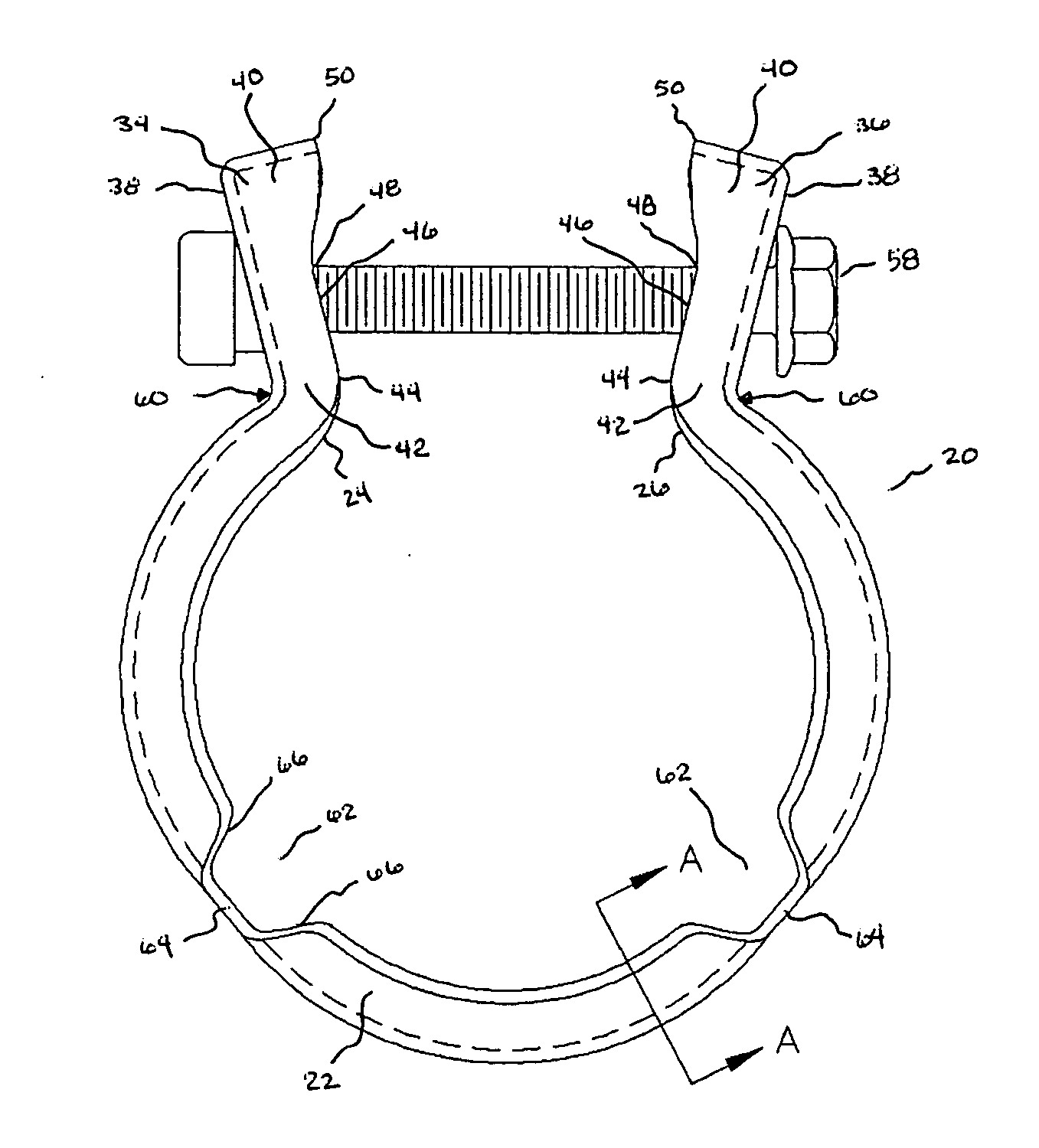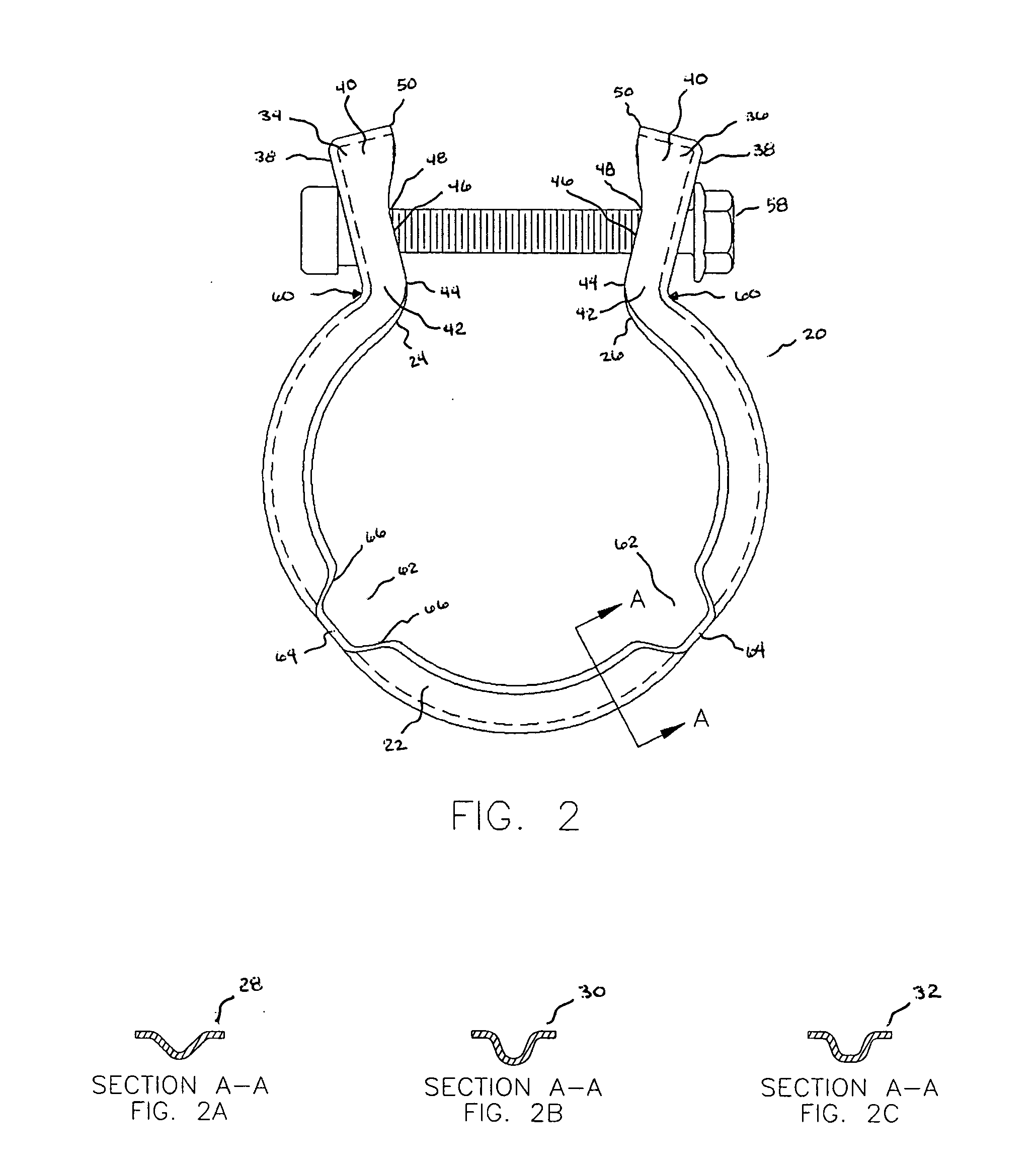Clamp
a technology of clamps and lugs, which is applied in the direction of sleeve/socket joints, mechanical equipment, machines/engines, etc., can solve the problems of engine vibration, expansion and contraction of both tubes and clamps, and wasting a portion of installation energy in deforming lugs, etc., to achieve the effect of convenient opening
- Summary
- Abstract
- Description
- Claims
- Application Information
AI Technical Summary
Benefits of technology
Problems solved by technology
Method used
Image
Examples
first embodiment
[0024] The clamp 20 is positioned around the tubes to be connected, and the fastener 58 is tightened to tighten the clamp around the connection. The fastener 58 may be tightened from an open position OP (FIG. 3), when the lugs 34, 36 are not touching, to a closed position CP (FIG. 4), when the thick portions 40 of the lugs are touching. The fastener 58 may be tightened further to a third position—even after the thick portions 40 of the lugs touch—so that the thin portions 42 of the lugs 34, 36 move closer to one another (as shown by arrows 60 in FIG.2). The ability to further tighten the clamp 20 after the thick portions 40 of the lugs 34, 36 touch allows the clamp to attain a tight fit with the tubes.
[0025] The terms “collar” and “tube” are used through this disclosure and shall mean “tubes” and “collars” of all shapes including but not limited to circular, polygonal and other shaped “tubes” and “collars.” Those of skill in the art will recognize that the material of the clamp may ...
second embodiment
[0026]FIGS. 2, 3 and 4 also show features of the clamp 20 in which the collar 22 includes one or more hinge areas 62 formed in the collar. The hinge areas 62 define a space between the clamp 20 and the tube that can be used to attach a gasket to the clamp or tube, allowing for improved sealing between tubes, including those that are flared or flanged. The hinge areas 62 also provide flexibility to allow the clamp 20 to be opened sufficiently to easily fit over the maximum diameter of the tubes being connected without disengaging the nut and bolt.
[0027] The hinge areas 62 may have a variety of shapes and, as shown in the embodiment of FIGS. 2, 3 and 4, the hinge areas are defined by hinge walls that form two angled planes 66 connected by a flat plane 64. Note that although FIGS. 2, 3 and 4 show clamps having hinge areas 62, the first embodiment need not include hinge areas or gaskets. The clamp has been shown and discussed as used with one or more tubes, including non-flared or non-f...
PUM
 Login to View More
Login to View More Abstract
Description
Claims
Application Information
 Login to View More
Login to View More - R&D
- Intellectual Property
- Life Sciences
- Materials
- Tech Scout
- Unparalleled Data Quality
- Higher Quality Content
- 60% Fewer Hallucinations
Browse by: Latest US Patents, China's latest patents, Technical Efficacy Thesaurus, Application Domain, Technology Topic, Popular Technical Reports.
© 2025 PatSnap. All rights reserved.Legal|Privacy policy|Modern Slavery Act Transparency Statement|Sitemap|About US| Contact US: help@patsnap.com



